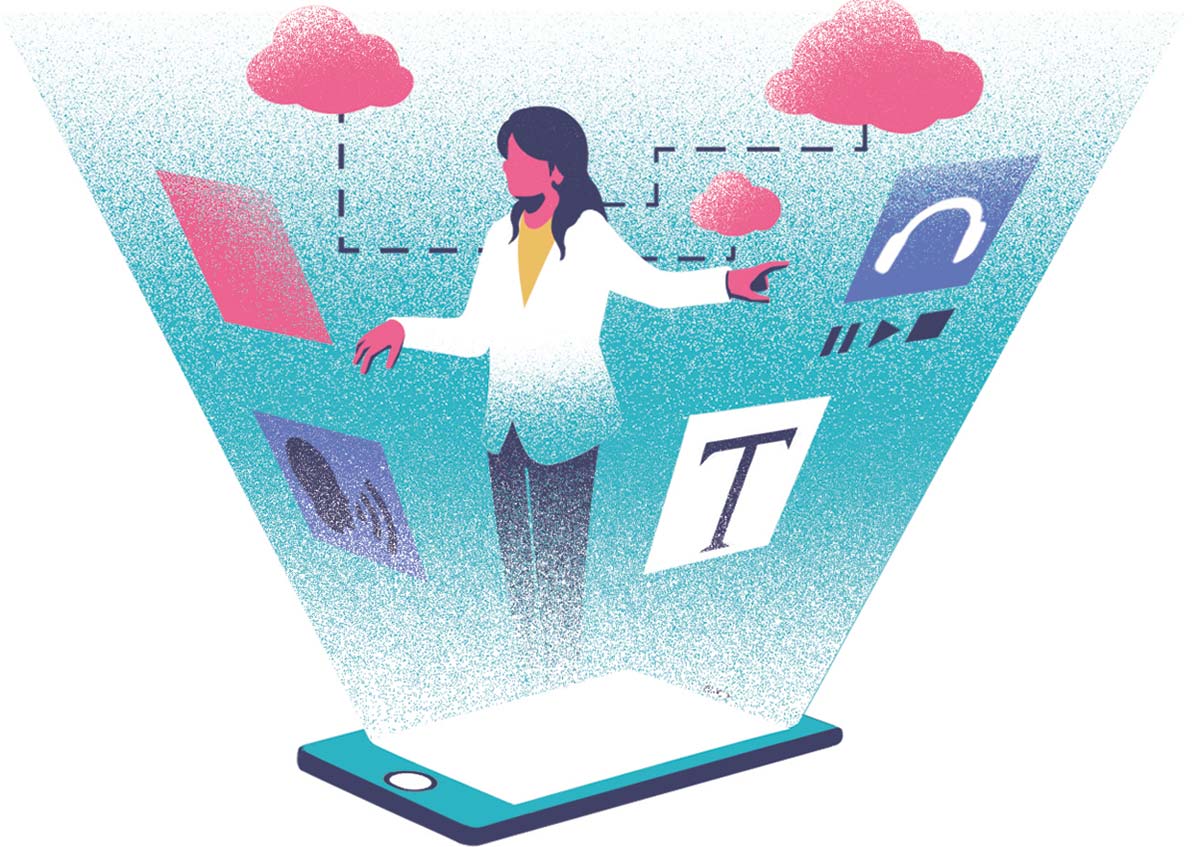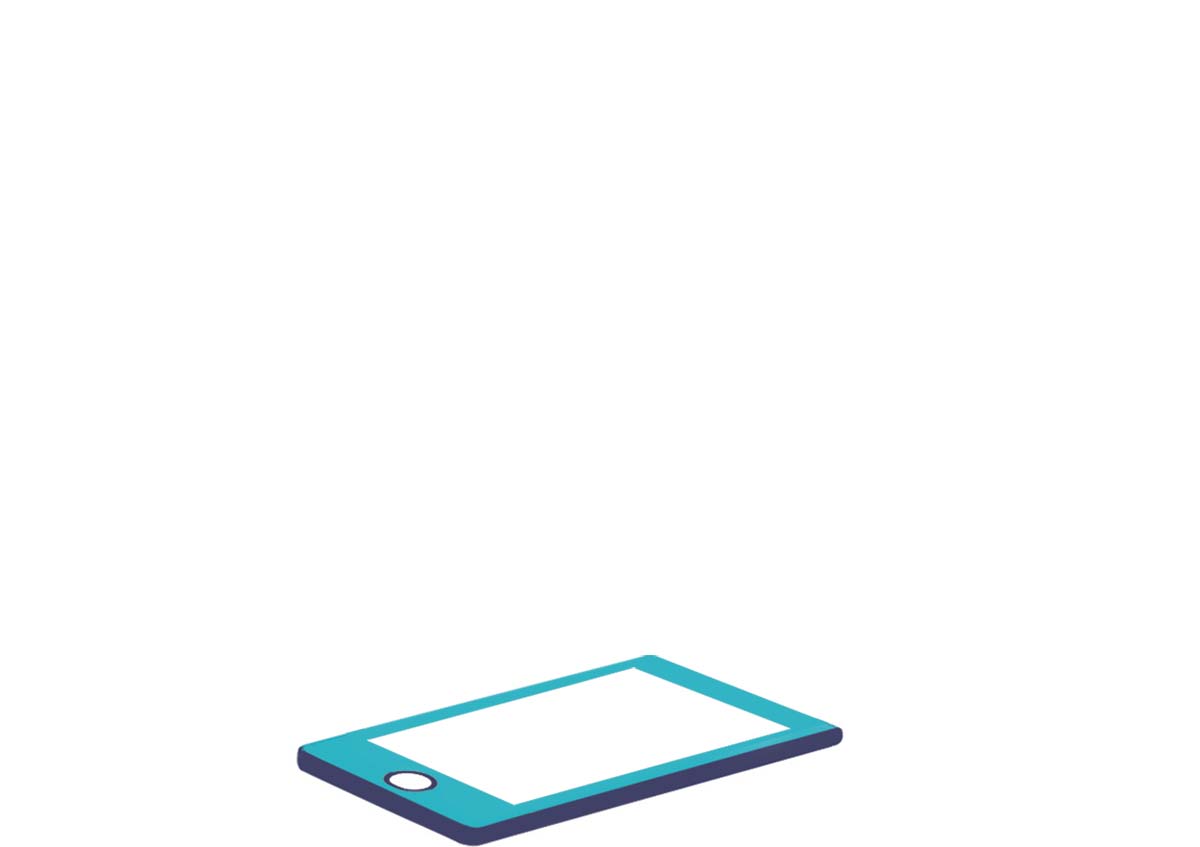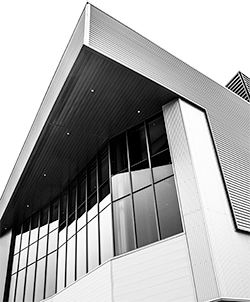
Breaking down barriers
Everyone's path to Mount Royal is unique, with each student reaching or surpassing benchmarks and overcoming obstacles to eventually land on campus.
Spring/Summer 2017 issue
For recent MRU grad Joseph Waring, navigating barricades is the norm. Due to mobility challenges, the Bachelor of Health and Physical Education — Sport and Recreation Management alumnus makes his way around campus in a quick and efficient power chair, giving him an up-close perspective on Mount Royal’s overall accessibility.
A familiar face on campus over the past eight years, Waring graduated in the fall of 2016 and now works with MRU Recreation.
Waring has been getting to campus from southwest Calgary using transit options that he says work well for his purposes.
“I catch the train from Shawnessy to the Heritage (LRT) Station, and then it’s only a 20-minute bus ride straight here,” says Waring. “The University does a great job of snow removal in the winter, which is something many might not think about. But that is one of the many things I have to plan for when going anywhere.”
For Waring, the organization that goes into getting places is considerable. Bathrooms are always the first concern, and he’s learned where the good and not-so-good ones are for his circumstances. Elevators, automatic doors and ramps are also logged and considered when planning his pathways.
Quick to note the evolution of accessibility-informed design throughout the expansion of the campus, Waring sees progress in the newer buildings. In September 2016, Mount Royal’s Taylor Centre for the Performing Arts was the recipient of the 2015 Calgary Award for Accessibility. According to The City of Calgary website, “The Award for Accessibility recognizes buildings or facilities in Calgary that significantly exceeded the minimum requirements of Section 3.8, ‘Barrier-Free Design’ of the Alberta Building Code for accessibility by persons with disabilities.”
In addition, says Waring, “EB (the Bissett School of Business) is head over heels above the main building in terms of accessible design.
“For example, the elevator to get upstairs on Main Street is between two bathrooms, so I have to hit the button and get out of the way so I don’t get hit by doors while waiting for it.”
Waring looks forward to the day when he can attend campus events and not have to sit in the back alone if he’s the only one in a wheelchair. He is optimistic that Canada will soon adopt federal legislation comparable to the U.S.’s Americans with Disabilities Act — which he witnessed to have positive impacts during his recent trip to Disneyland in California.
□
More to come
For Pat Pardo, PhD, who heads up Mount Royal’s Accessibility Services, the emergence of an accessibility-informed approach that keeps the principle of universal design at its core is instrumental for bridging gaps for students and employees of the University.
Pardo is legally blind and hopes that as accessibility evolves, structures, policies and communities are each built in a way that is inclusive for all.
At work, Pardo uses a suite of different instruments to help overcome her limited eyesight. Magnification tools, dictation software, screen readers — the list goes on. But in recent years she has become increasingly reliant on now-common features of electronic devices that are replacing traditional aids.
“Change often happens serendipitously,” says Pardo. “What one person sees as a hands-free driving option, another sees as a bridge to a previous accessibility gap.”
Software such as Apple’s Siri now allows Pardo to better control her smartphone and use applications that were once not practical.
It was the proclamation in December 1982 of the United Nations’ Decade of Disabled Persons (1983-1992) that marked a new era for accessibility and inclusion.
During this time, emphasis was placed on developing new financial resources, improving education and employment opportunities and increasing participation in communities and countries. After evaluating barriers to inclusivity, the first was found to be people’s attitudes.
“This continues to be the most difficult barrier to overcome,” says Pardo.
As time goes on, attitudes are slowly beginning to change. Designing for access is no longer seen as a burden, but as an obligation.
“Accessibility is about flexibility, and how to make whatever you are creating meaningful for a broad cross-section of stakeholders,” says Pardo. This universal “designing for learning” is also a theme of Mount Royal’s Campus Master Plan, which looks to create an equitable and all-embracing campus.
Sometimes it’s simply finding the best tool to get the job done. For adaptive technologist Sarah Callaghan, discovering the right mix is when the secrets to students’ success are revealed.
After being diagnosed with five learning disabilities while attending the University of Prince Edward Island, Callaghan was able to excel after finding the accessibility service department. Now Callaghan spends her days helping MRU students match the right technology to their specific challenges so they can also achieve their goals.
“The design of accessibility technology has evolved from adaptive, to assistive, to now … just technology,” says Callaghan. “Before it used to be software or tools designed specifically for certain disabilities, now it’s more about applications. In most cases, it’s really just finding the right tool to bridge the gap.”
Tapping the terabyte
As Mount Royal further integrates into its surrounds, the ease with which information moves around becomes ever more important. A vast repository of knowledge and experience has been amassed by students and faculty over more than a century, and it’s stored within both the physical and digital realms of the University.
Access to this information is key to unlocking the influences that will continue to drive the post-secondary search engine. There are over 1,900 student computers in eight open access labs, 51 teaching labs and 29 public kiosks on campus. Around 9,000 devices per day access the University’s private network. With the opening of the Riddell Library and Learning Centre, another 100 computer workstations and 110 wireless access hubs will be added. Altogether, the average daily data use is about one terabyte.
The introduction of the new MRvisitor wireless network service in late 2016 provides free connectivity for basic Internet service to all Mount Royal visitors. Since its launch, this network has been used by approximately 200 people daily: significant growth is anticipated as awareness of its availability increases.




